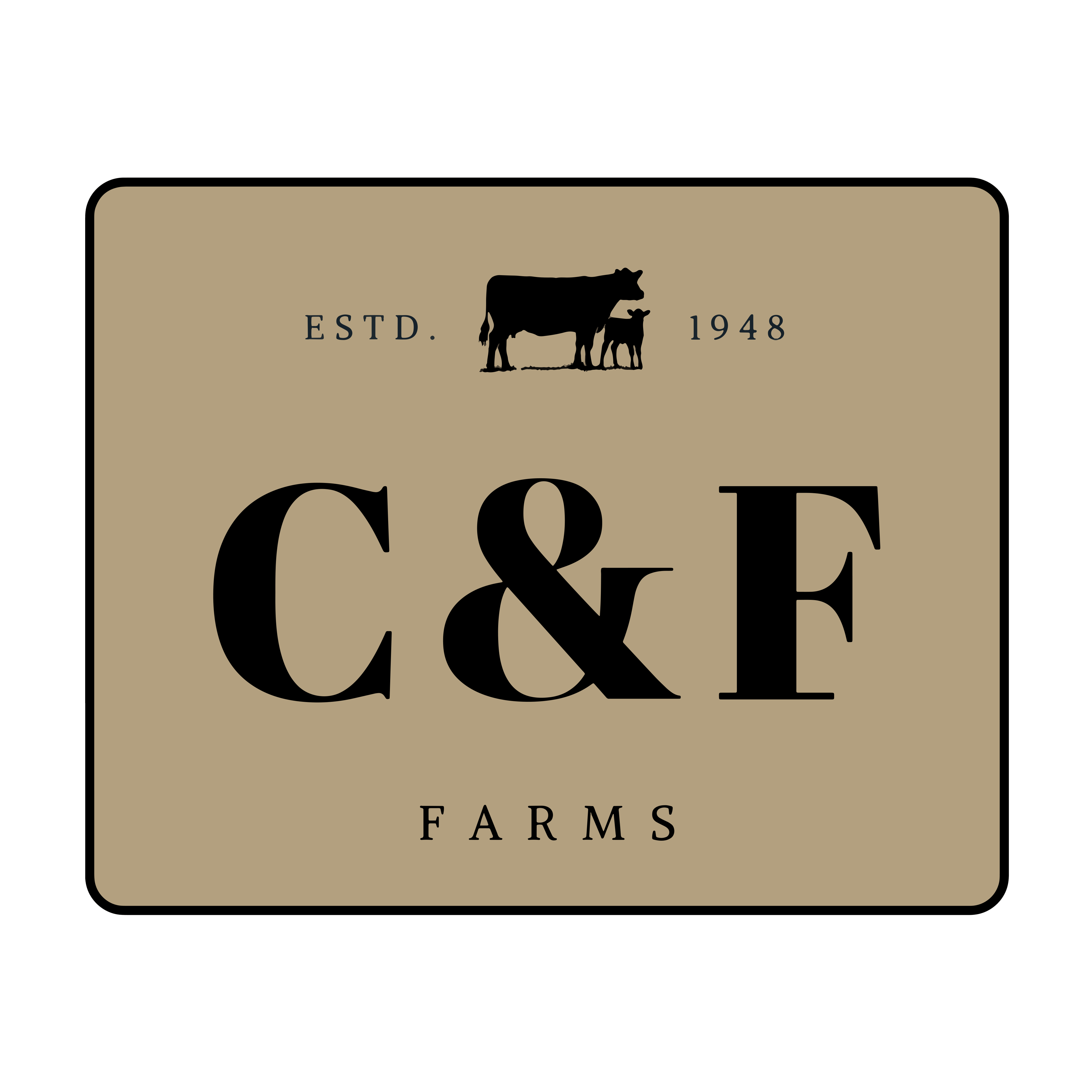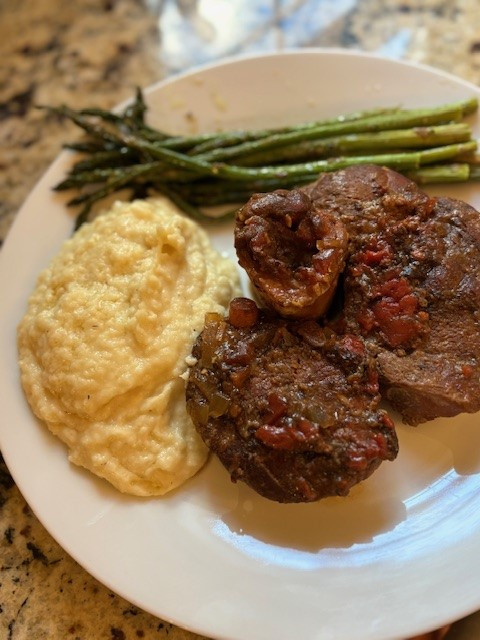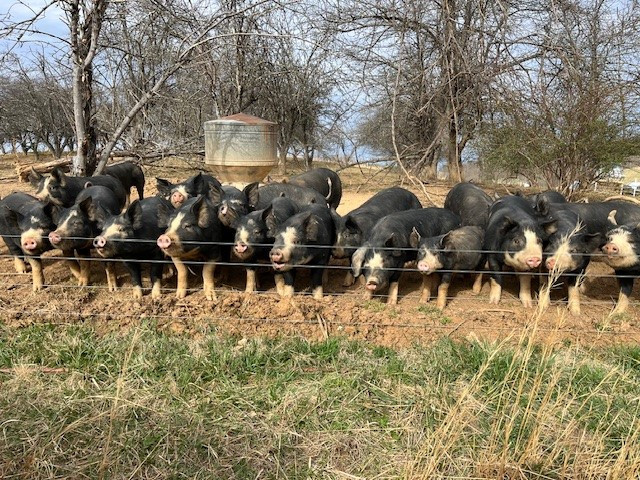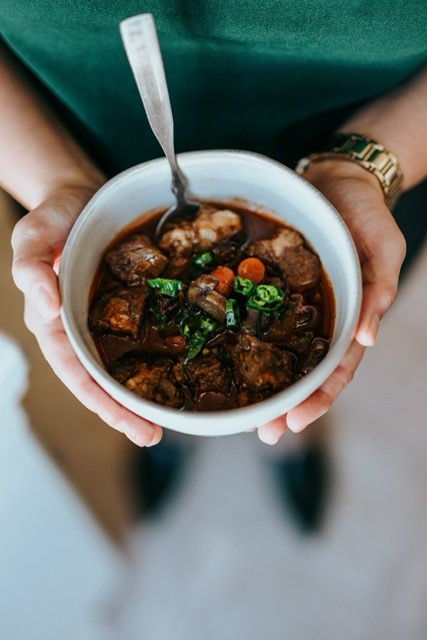A Farm Kitchen Favorite: Slow-Cooked Ossobuco with Creamed Parsnips and Asparagus
There’s something deeply satisfying about taking a humble cut of meat and turning it into a show-stopping, soul-warming meal. That’s exactly what ossobuco is all about. This Italian classic, made from cross-cut beef shanks, brings together rich bone marrow, tender beef, and a hearty sauce—all from a cut most folks walk right past at the grocery store. But in our kitchen, this cut gets the star treatment. Today, we’re walking you through a simple, slow-cooked version of ossobuco that doesn’t require hours of babysitting on the stovetop. Just a quick sear in a pan, then let the crockpot do the rest. We like to serve ours with buttery creamed parsnips and tender-crisp asparagus—a plate that’s rustic, comforting, and downright elegant. Why Ossobuco? Ossobuco literally means “bone with a hole,” referring to the marrow-filled center of the beef shank. That marrow slowly melts into the sauce as it cooks, adding richness and depth that you just can’t get from leaner cuts. It’s the kind of food that sticks to your ribs and warms your soul, especially when the weather turns cool or when you just need a meal that feels like home. And when it comes from pasture-raised cattle, you’re getting more than flavor—you’re getting nutrition, sustainability, and the peace of mind that comes from knowing your food was raised with care. Crockpot Ossobuco Recipe Serves 4 Prep Time: 20 minutes Cook Time: 6–8 hours on low You’ll need: 2–3 pieces of C&F Farms Ossobuco Salt & pepper 1/2 cup flour (optional, for dredging) 2 tbsp olive oil or lard 1 medium onion, diced 2 carrots, diced 2 stalks celery, diced 3–4 cloves garlic, minced 1/2 cup dry white wine (or beef broth) 1 (14 oz) can crushed tomatoes 1 cup beef broth 2 sprigs fresh thyme 1 bay leaf Zest of 1 lemon (optional, for garnish) Chopped parsley (optional, for garnish) Instructions: Prep & Sear: Pat the ossobuco dry with paper towels. Season generously with salt and pepper. Dredge lightly in flour if you want a thicker sauce. Heat oil or lard in a cast iron skillet over medium-high heat. Sear each piece until browned on all sides—about 2–3 minutes per side. Don’t skip this step—it adds layers of flavor. Sauté Veggies: In the same skillet, reduce heat and add onions, carrots, and celery. Sauté until softened, about 5 minutes. Add garlic and cook for another minute. Deglaze: Pour in the wine or broth to deglaze the pan, scraping up the browned bits. Let it simmer for a minute or two to reduce slightly. Crockpot Time: Transfer the seared ossobuco to your crockpot. Pour the veggie/wine mixture over the top. Add crushed tomatoes, beef broth, thyme, and bay leaf. Cover and cook on low for 6–8 hours until the meat is tender and nearly falling off the bone. Serve: Carefully remove the ossobuco and spoon the sauce over top. Finish with lemon zest and parsley if desired. Serve with creamed parsnips and sautéed asparagus for a full plate of comfort. Creamed Parsnips (a cozy alternative to mashed potatoes) 2 lbs parsnips, peeled and chopped 3 tbsp butter 1/2 cup heavy cream or whole milk Salt and pepper to taste Boil parsnips until tender, drain, and mash with butter and cream. Season well and serve warm. Asparagus (simple and fresh) 1 bunch fresh asparagus Olive oil or butter Salt and pepper A squeeze of lemon (optional) Trim the ends, toss with oil or butter, and roast at 425°F for 10–12 minutes, or sauté quickly on the stovetop. This meal is one of our favorite ways to slow down and enjoy the fruits of good farming and good food. It’s not fancy—it’s just real, honest cooking that makes you proud to gather around the table. If you make this dish, we’d love to hear how it turned out—or better yet, see a picture! Want to try it yourself? Grab some ossobuco from our online store or market booth while it’s in stock—this cut doesn’t last long!










